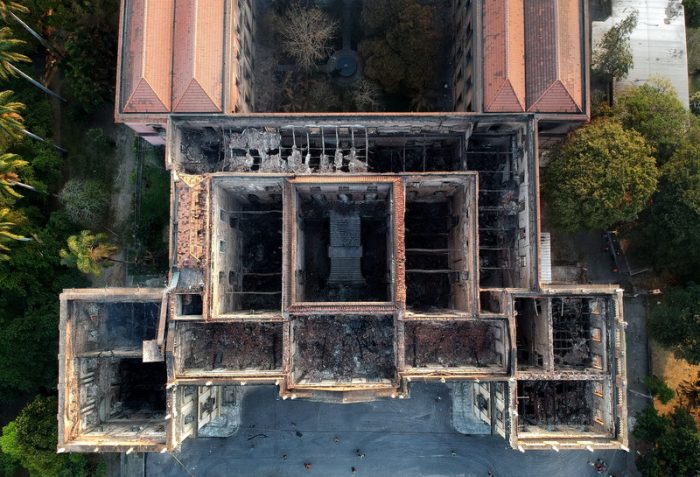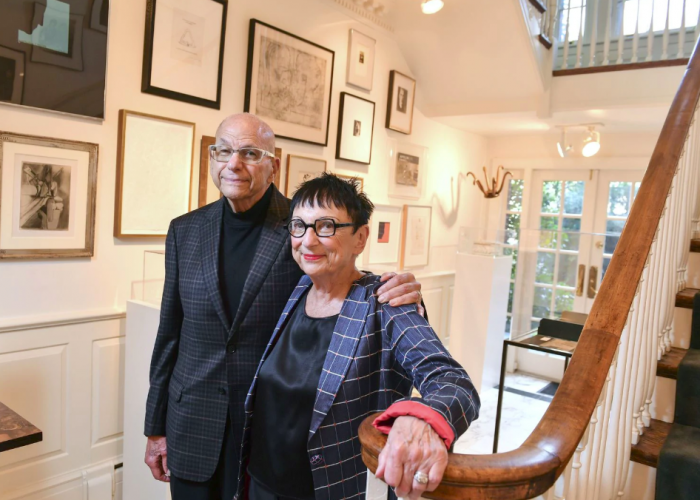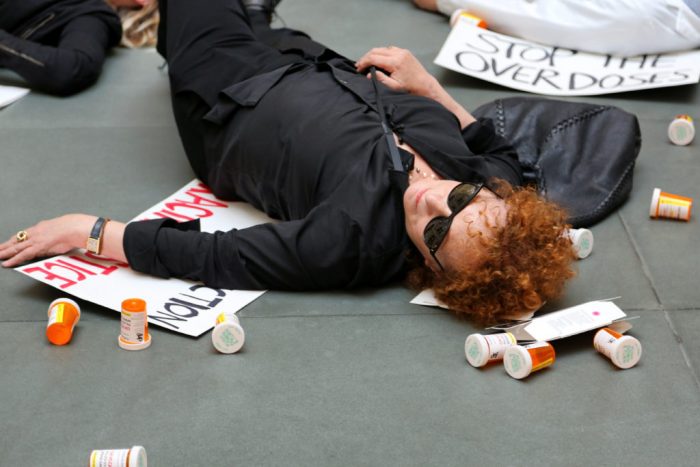ICYMI: Highlights from the week that was Sept 2. – Sept.8, 2018
No one can keep up with everything, so let us do it for you. We’ll gather the top Smithsonian stories from across the country and around the world each week so you’ll never be at a loss for conversation around the water cooler.
This week we mourned a great loss and celebrated a great gift.

In Brazil’s National Museum Fire, Officials Fear ‘Incalculable’ Loss Of Artifacts
NPR, September 3

Drone view of Rio de Janeiro’s treasured National Museum, one of Brazil’s oldest, on September 3, 2018, a day after a massive fire ripped through the building.
Mauro Pimentel/AFP/Getty Images
A massive fire that engulfed Brazil’s National Museum Sunday night has left staff and officials fearful that many of the nation’s most precious artifacts have been lost forever.
The museum housed 20 million items, including objects that tell the story of Brazil’s past: the first fossil discovered there, the oldest female skull found in the Americas and the nation’s largest meteorite.
First built in 1818 as a residence for Portugal’s royal family, the edifice also contained insects, mummies, paintings and dinosaur bones.
It had priceless items from ancient Egypt, Greece and Italy, and served as a prominent research institution. Read more from Sasha Ingber for National Public Radio.
Washington couple donates personal Duchamp collection to the Hirshhorn
The Washington Post, September 5

Barbara and Aaron Levine pose by their priceless collection of Marcel Duchamp art, which they are donating to the Hirshhorn Museum. (Photos by Ricky Carioti/The Washington Post)
Aaron and Barbara Levine spent 20 years purchasing art by Marcel Duchamp, the pioneering conceptual artist considered a giant of the 20th century. Attracted by Duchamp’s intellectual curiosity and sense of humor, the Levines describe their collection as joyful, intimate, personal.
Soon they will add another adjective: public.
The Washington couple has decided to donate its Duchamp art to the Hirshhorn Museum and Sculpture Garden, where the works will raise the profile of the Smithsonian modern art museum.
“This is the art world equivalent of the Wizards getting LeBron James,” said Hirshhorn board chairman Daniel Sallick. “Any museum in the world would want this collection.” Read more from Peggy McGlone for The Washington Post.
‘Direct Action Is Our Only Hope’: Opioid Crisis Activist Nan Goldin on Why People Need to Go Offline to Fight for Their Beliefs
For eight months, Goldin has dedicated herself to speaking out against the Sackler family’s influence in art museums.
ArtNet News, September 4

Nan Goldin staging a ‘die-in’ at the Harvard Art Museums. Photo: TW Collins.
There was no question-and-answer period after the premiere of Madeleine Sackler’s film It’s a Hard Truth Ain’t It at the Tribeca Film Festival this past spring. Rumors swirled that it had to do with a particularly unhappy audience member sitting near the back: Nan Goldin. The celebrated photographer has been after the filmmaker’s—and the whole Sackler dynasty’s—attention in order to hold them accountable for their role in the opioid epidemic.
The Sacklers have an outsize influence in art-world philanthropy, and their name graces museums worldwide. But some of the family’s fantastic wealth has been bolstered by Purdue Pharma, founded in 1892 by brothers Raymond and Mortimer Sackler. (Their older brother, Arthur Sackler, held stocks in the company until his death.) The company created and marketed the highly addictive painkiller Oxycontin, which is at the heart of the ongoing opioid crisis in the US.Read more from Kate Brown for ArtNet News.
The Girdle-Inspired History of the Very First Spacesuits
Bra and girdle technology and seamstresses on Singer sewing machines were integral to NASA’s first spacesuits.
Racked, September 5

Employees of ILC Industries work on inner pressure suits during the assembly of a spacesuit to be used in NASA’s Apollo space program, Dover, Delaware, 1968. Photo: Ralph Morse/The LIFE Picture Collection/Getty Images
Neil Armstrong and Buzz Aldrin are known for many things; being fashion plates isn’t one of them. When the Apollo 11 astronauts made their giant leap for mankind in 1969, however, they were wearing a type of “space couture” that shared a history — and, indeed, many of the same seamstresses — with what was essentially the Spanx of the time.
More than two decades earlier, the International Latex Corporation, later known as ILC Dover, debuted the Playtex Living Girdle, a “sheath of smooth liquid latex” that was a “new discovery in figure control.” Hailed as a revolution and a revelation, it was free from seams, stitches, bones, or rods that pinched or restricted, along with an “all-way stretch” that molded to the wearer without the need for custom fitting.
“The ideal all-occasion girdle that makes you inches slimmer in everything from an evening dress to a bathing suit!” one ad in Life magazine declared. “As comfortable for golf or driving as for hours of sitting at an office desk. Work or play, winter or summer, the Playtex Living Girdle never tires for you.” Read more from Jasmin Malik Chua for Racked.
Posted: 18 September 2018
- Categories:








